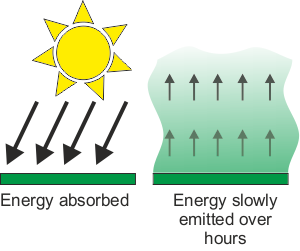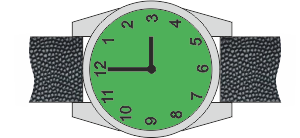PHOSPHORESCENCE
Phosphorescence is a process whereby energy from the sun is absorbed by a ‘material’ and it is released slowly over a long time, in the form of light. The energy / light emitted is at a low intensity and the time period can be many hours.

PRACTICAL EXAMPLE -
THE USE OF PHOSPHORESCENT PIGMENTS
A good example is a ‘luminous’ watch. Even the most basic ‘luminous’ watch will absorb the sun’s energy, during daylight hours and also artificial light. At night, the stored energy is slowly released. In fact, the stored light is released even during daylight hours, although we do not notice it in daylight conditions.

WHAT IS A PHOSPHORESCENT
PIGMENT ?
Phosphorescent pigments are manufactured from phosphors. A good example is copper-activated zinc sulfide, called ‘GS phosphor’. Copper is added to zinc sulphide crystals, enabling the crystals to adsorb light and slowly emit it. This type of pigment is often used in the manufacture of novelty toys.
Another good example is strontium aluminate, which is 10 times more luminous than zinc sulphide. This has more serious applications such as safety signs, which must be visible in murky / dark environments (e.g. a sign pointing towards a fire escape / exit)
